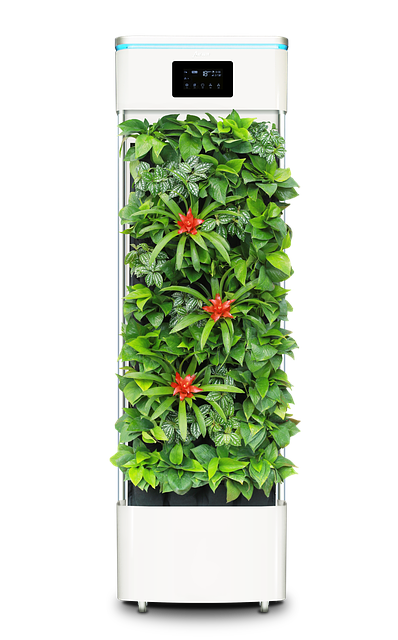Indoor plants are an all-natural way to remove toxic agents such as benzene, trichloroethylene, and formaldehyde from your air. In addition to looking great, the best plants for bedroom air-purifying tend to be easy to care for. “Air-purifying plants can help absorb and trap toxins while releasing oxygen to generate cleaner air, making for a more healthy and fresh sleeping environment throughout the bedroom,” says Andres Montoya, an indoor and outdoor landscaping expert who works on hospitality projects. “Most indoor plants are relatively easy to take care of and are adaptable to common indoor elements like low light and indoor temperatures.” Whether you have bright light in your bedroom or slumber in a shadier corner, the following are the best bedroom plants with varying condition requirements that require little care.
Flamingo plant
If you need houseplants for your bedroom, look no further than the Flamingo plant—a.k.a. an anthurium—which helps to eliminate carbon dioxide and provide copious oxygen with its greenery. And what better location to display these green and pink treasures than in the space where you spend several hours every day and night? “The Flamingo plant requires a good acidic well-drained soil and does not like direct sunlight and produces beautiful and durable flowers throughout the year,” Andres says.
Anthurium Scherzerianum (Flamingo Lily)
Lady palm
The Lady palm (also commonly known as the Bamboo palm) grows in an attractive, even pattern, and new leaf stalks sprout from its bottom. This is one of the best plants for bedroom placement because they grow best in bright, indirect light near a window or skylight commonly found in sleeping quarters. Each leaf stalk can grow up to 18 inches long so the green leaves will grace an empty bedroom corner easily. “The Lady palm is very tolerant to low light conditions, and this plant does not require too much water—its care is very easy,” Andres says.
Pothos
Originating from the Solomon Islands in the South Pacific, the pothos would be seen covering the forest floor in its natural habitat. This is a great hanging plant—get creative with a hanging basket and let the leaves grow downwards. “The Ivy pothos is a very strong plant and can easily adapt to different environments,” Andres says. “From indirect light conditions to direct sun, this plant can grow in different types of substrate like soil, wood, and water. The Ivy pothos is also considered a top air-purifying plant which can remove toxins from the air.”
Monstera deliciosa
The popular Monstera deliciosa is native to South America and thrives in indirect light (it typically grows under the shade of trees), so it’s ideal if your bedroom is lacking direct sun. According to Andres, it’s also a winner for bedrooms on the petite side as it “produces big leaves in small spaces.” The Sill sells a small or medium potted Monstera deliciosa, also known as the Swiss Cheese Plant.
Phalaenopsis orchid
Your bedside table will get a beautiful focal point with the Phalaenopsis orchid. “This is one of the most beautiful orchids, well adapted to indoor spaces and indirect sunlight,” Andres says. “It flowers once per year for approximately three months: Flowering starts in the months with the lowest temperatures, and they are adapted to live in shady places.”
Large Phalaenopsis Orchid
Echeveria
If you’re looking to up the air quality in your bedroom, Echeveria succulents are worth considering to create serene oxygenated green vibes. “This plant is from the group of succulent plants very near to the cactus plant. They are drought-tolerant plants that like well-drained soil,” Andres says. “Echeveria plants like the sunlight, but only require exposure a few hours a day to sufficiently keep it healthy and growing with brilliant colors.”
Blue Rose Echeveria Succulent
Peace lily
Peace lilies are another one of the most attractive bedroom plants. You can prop them up on your windowsill, and they’re able to filter out many harmful toxins. The moisture given off by these houseplants boosts the humidity in the room and suppresses airborne microbes that can lead to allergies. If you suffer from dry nasal passages, the Peace lily helps to rid the bedroom of indoor air pollutants that cause dryness. For a good night’s sleep, the Peace lily will not only help create clean air, it’s also a low-maintenance plant that only needs to be watered weekly.
Spider plant
Spider plants have made a huge comeback in recent years, after being commonplace in bedrooms throughout the ’70s. Their sprawling, striped leaves spread out from the center, creating a bountiful green mass. Studies have shown that the plant removes 90% of cancer-causing chemical formaldehyde from the air (if that doesn’t make you sleep better, what will?). It also absorbs odors and fumes to help keep the oxygen level high and promote better sleeping. These plants also produce baby Spider plants, so you can grow and propagate new plants for your bedroom.
Snake plant
Another great air purifier, the snake plant (also known as Dracaena trifasciata) is also one of the best indoor plants for beginners. However, beware if you have pets—this one can be toxic if ingested by your furry friend.
Source: https://www.architecturaldigest.com/story/the-best-plants-for-bedroom









